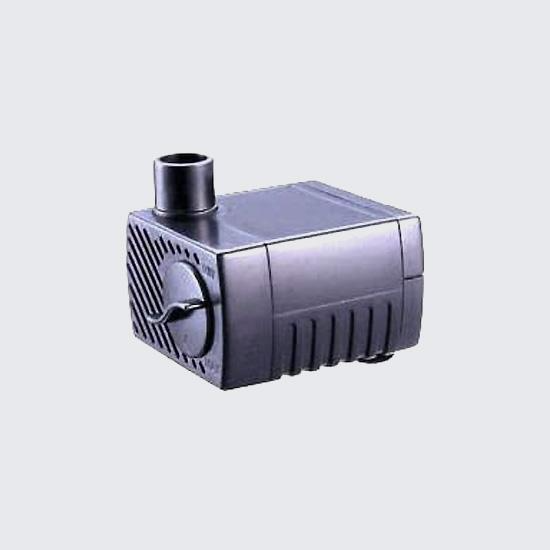A pond pump is a critical component in any outdoor pond setup, ensuring the circulation of water to maintain a healthy aquatic environment. It helps oxygenate the pond, supporting fish and plant life and preventing water stagnation that can lead to algae growth. Pond pumps also enable the operation of water features such as fountains and waterfalls, adding aesthetic value.
Choosing the right pump involves considering the pond’s volume, the desired turnover rate, and any additional water features to create a balanced and thriving ecosystem. However, with the myriad of options available, choosing the perfect outdoor pond pump can be a daunting task. This comprehensive guide aims to demystify the process, helping you make an informed decision that suits your pond’s needs.
Understanding Pond Pumps
Before you purchase outdoor pond pumps, it’s essential to understand what pond pumps do. Primarily, they circulate water through the pond’s filtration system, removing debris and maintaining clear water. They also oxygenate the pond, which is crucial for fish and plant health and can power water features like waterfalls and fountains, adding aesthetic appeal.
- Determining the Right Size
The first step in selecting the perfect pond pump is determining the right size. This is crucial, as a pump that’s too small won’t circulate the water effectively, while one that’s too large can be energy-inefficient and overpowering for your pond’s inhabitants.
- Calculate Pond Volume
To start, calculate your pond’s volume. Measure the length, width, and average depth in feet and multiply these together to find the cubic feet. Then, multiply this number by 7.48 to convert it to gallons, the standard measure for pond volume.
- Consider Water Features
If you have water features like a waterfall or fountain, you’ll need a pump with enough head height to push water to the top. Measure the vertical distance from the water’s surface to the highest point of the feature. Add a foot of head height for every 10 feet of horizontal distance the water needs to travel.
- Calculate Turnover Rate
A healthy pond requires the water to be turned over at least once every two hours. Divide your pond’s total volume by 120 (minutes) to find the minimum flow rate (in gallons per minute) your pump should have.
Types of Pond Pumps
There are two main types of pond pumps: submersible and external. Submersible pumps are placed directly in the pond, hidden from view, and are generally easier to install. External pumps sit outside the pond, are more energy-efficient, and are easier to maintain, but they can be more challenging to disguise.
- Submersible Pumps
Ideal for smaller ponds and beginners, submersible pumps are simple to install and operate quietly. They’re typically less expensive upfront but can be more challenging to access for maintenance.
- External Pumps
Best for larger ponds or those with significant water features, external pumps offer greater efficiency and longevity. They require a dry, ventilated space outside the pond and are easier to clean and repair.
Features to Look For
When choosing a pond pump, consider the following features for added convenience and efficiency:
- Energy Efficiency: Look for pumps that consume less power for the same flow rate, reducing your electric bill and environmental footprint.
- Durability: Opt for pumps made from corrosion-resistant materials, especially if your pond has a high salt or mineral content.
- Adjustable Flow Rate: Some pumps allow you to adjust the flow rate, which is useful for ponds with seasonal changes or varying water feature needs.
- Warranty: A longer warranty can give you peace of mind, indicating the manufacturer’s confidence in their product.
Installation Tips
Proper installation is key to maximizing your pump’s efficiency and lifespan. Ensure the pump is placed on a stable surface to prevent vibration and wear. If using a submersible pump, consider a pump sock or cage to prevent debris from clogging the intake. For external pumps, use a check valve to prevent backflow and protect the pump from water damage.
Maintenance Matters
Regular maintenance extends your pump’s life and ensures it runs efficiently. Clean the intake and check the power cord and connections for wear regularly. During winter, if your pond freezes, consider removing the pump or using a pond heater to prevent damage.
Making Your Selection
With a clear understanding of your pond’s needs, you’re ready to choose the perfect pump. Compare models, read reviews, and don’t hesitate to ask for advice from professionals or experienced pond owners. Remember, the right pump is the heart of your pond, circulating life and beauty through your aquatic paradise.
Conclusion
Selecting the perfect outdoor pond pump doesn’t have to be overwhelming. By understanding your pond’s specific needs, the types of pumps available, and the features to look for, you can make an informed choice that will enhance the beauty and health of your pond for years to come. Whether you’re creating a tranquil garden retreat or a vibrant aquatic ecosystem, the right pump is crucial for bringing your vision to life.
